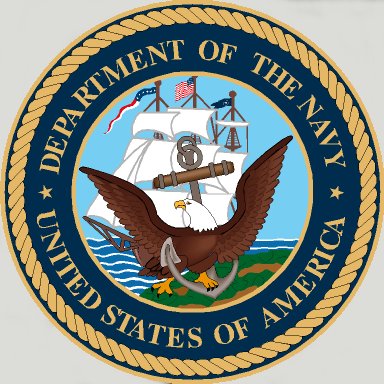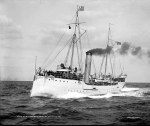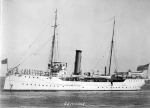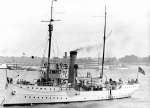NavSource Online:
Section Patrol Craft Photo Archive
USCGC Seminole (CG 6)
George - Vice - Fox - Pup |
Negative - Roger - Cast - William |
ex-USRC Seminole
Rust - Cast - Sail



Seminole served the Revenue Cutter Service, U.S. Navy and the U.S. Coast Guard
Revenue Cutter:
Specifications:
| Commanding Officers | ||
| 01 | CAPT Godfrey L. Carden, USRS - Retired as Captain | 1913 |
| 02 | CAPT(T) Eugene Blake, Jr., USCG - Retired as Captain | 1918 - 1919 |
|
|
A Native American people made up of various primarily Creek groups who moved into northern Florida during the 18th and 19th centuries, later inhabiting the Everglades region as well, with present-day populations in Oklahoma and southern Florida. The Seminole Wars ended in the removal of the majority of the Seminoles to Indian Territory
The steel-hulled Seminole was built by the Columbian Iron Works Company in Baltimore, Maryland. She was launched on 18 March 1899 and was accepted for the Revenue Cutter Service by Revenue Captain Russell Glover. She was formally commissioned on 3 September 1900. She was first stationed at Boston, Massachusetts, arriving there on 17 September 1900. She patrolled the New England coast and the North Atlantic. Her winter cruising area included assisting fishing vessels in the ice of Newfoundland.
She transferred to Thompkinsville, Staten Island, New York on 22 May 1904. She transferred yet again on 5 July 1905, this time to Wilmington, North Carolina. Her cruising ground included the waters between Cape Hatteras and the St. John's River with occasional patrols to Jacksonville and Key West, Florida. She served on quarantine duty in the Gulf of Mexico at Gulfport, Mississippi, Key West, and Fort Morgan, Alabama from 8 August to 2 November 1915.
Based out of San Juan, Puerto Rico, she served on Neutrality Patrol from 24 August to 27 November 1915. She was transferred to Navy control on 6 April 1917 after the U.S. declared war on Germany. She remained under naval orders until returned to Treasury Department control on 28 August 1919, operating in primarily as a coastal escort vessel within the Sixth Naval District. While under naval orders, on 30 April 1917, she escorted the seized German freighter Hohenfeldt from Savannah to Charleston. In May, 1917, Seminole escorted the seized German steamships Kiel and Nicaria from the Cape Fear River to Charleston. Beginning on 2 December 1917 she escorted 11 British merchant vessels from Norfolk to a position 50 miles off the coast, where it was believed that submarine attacks were unlikely, and she then returned to Norfolk. In February 1918 she steamed from Norfolk to Cristobal, Panama via Guantanamo, Cuba, to pick up and tow a barge back to Norfolk.
On 4 April 1918 she departed Newport News with the Army transport Meade in tow bound for Boston. The tug Tasco assisted the cutter on the voyage. They encountered heavy weather on the way off Nantucket Shoals and when the weather threatened to ground the vessels Seminole anchored Meade and evacuated the transportís crew. The weather cleared on 13 April and after Seminole ran short of coal the SS Germantown finished the tow to Boston.
Following tours of duty that included New York, she returned to her old cruising grounds and homeport of Wilmington, North Carolina. She transferred to the Great Lakes on 26 June 1929 and was based out of Sault Ste. Marie, Michigan. She was laid up during the winter months. She remained in service there until she was decommissioned. She was decommissioned on 17 December 1934 and transferred to Federal Emergency Relief Administration.
| Back to the Main Photo Index | Back to the Revenue Cutter Photo Index |
| Comments, Suggestions, E-mail Webmaster |
|
This page created by Joseph M. Radigan and maintained by David Wright |



